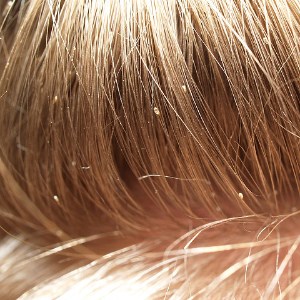Detect, Eliminate & Prevent
Detect: The most common symptom of head lice is itching. Lice are very small -about the size of a sesame seed- and can be brown, tan , or gray. Bright lights or a magnifying glass can help to see them. Part your child's hair in small sections to inspect the scalp, behind the ears, and the nape of the neck. Lice eggs are called nits. They are easier to see since they are not moving. Nits are tiny white, oval-sized eggs that attach to the hair close to the scalp. They may look like dandruff but can't be removed by brushing or washing. You may also see small red bumps on the scalp.
Eliminate: This can be a daunting task, but it is a necessary one. There are over the counter and prescription products. Use according to the package instructions. Proper use will kill live louse in your child's hair. You may want to do a second washing in 7-10 days to kill any newly hatched lice. After the initial washing, you will need to part the hair into sections, working one section at a time. Pin hair back after you comb out the nits to ensure that each section is clean. Clean comb as you go by wiping it off with a tissue-throwing the tissue in a sealed plastic bag. Comb for nits daily for two weeks.
Prevent: The same time you treat your child's hair you will need to clean your home. Vacuum furniture, rugs, & pillows. Soak combs, brushes, headbands, etc. in hot water for at least 10 minutes. Wash personal items such as hats, towels, linens and then dry them in a hot dryer for at least 10 minutes. Dry clean any items you cannot wash. Teach your child to avoid sharing brushes, combs, head wear, and to avoid head-to-head contact-when taking selfies.

